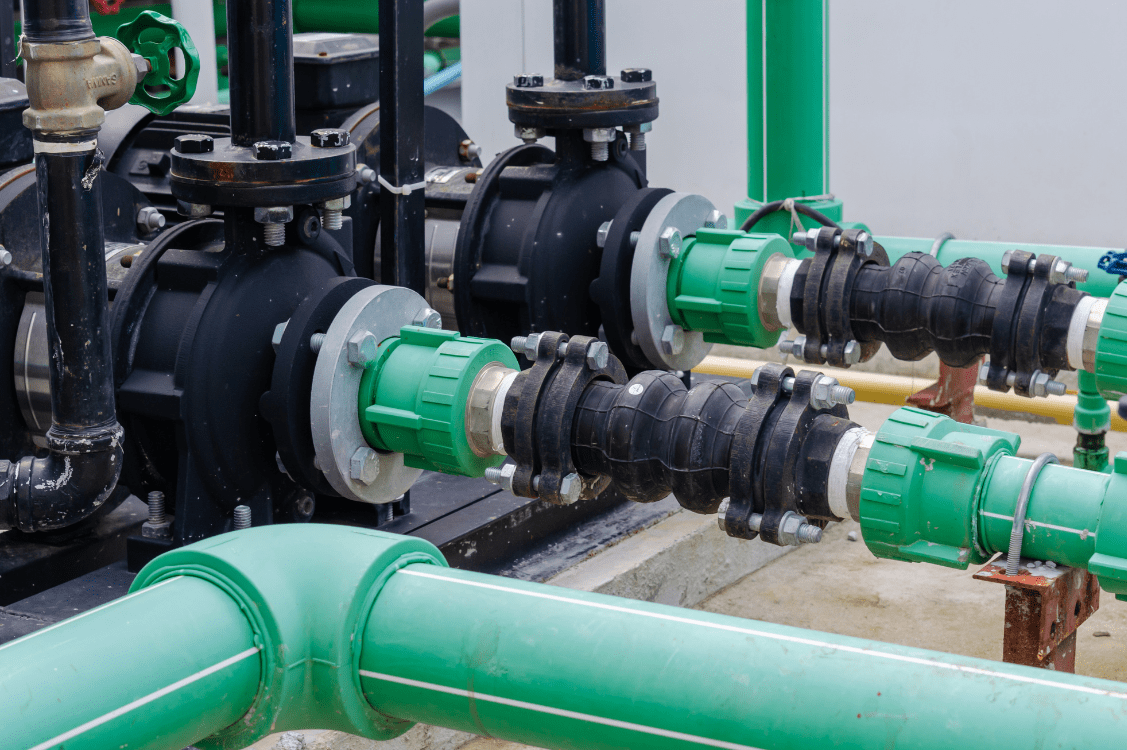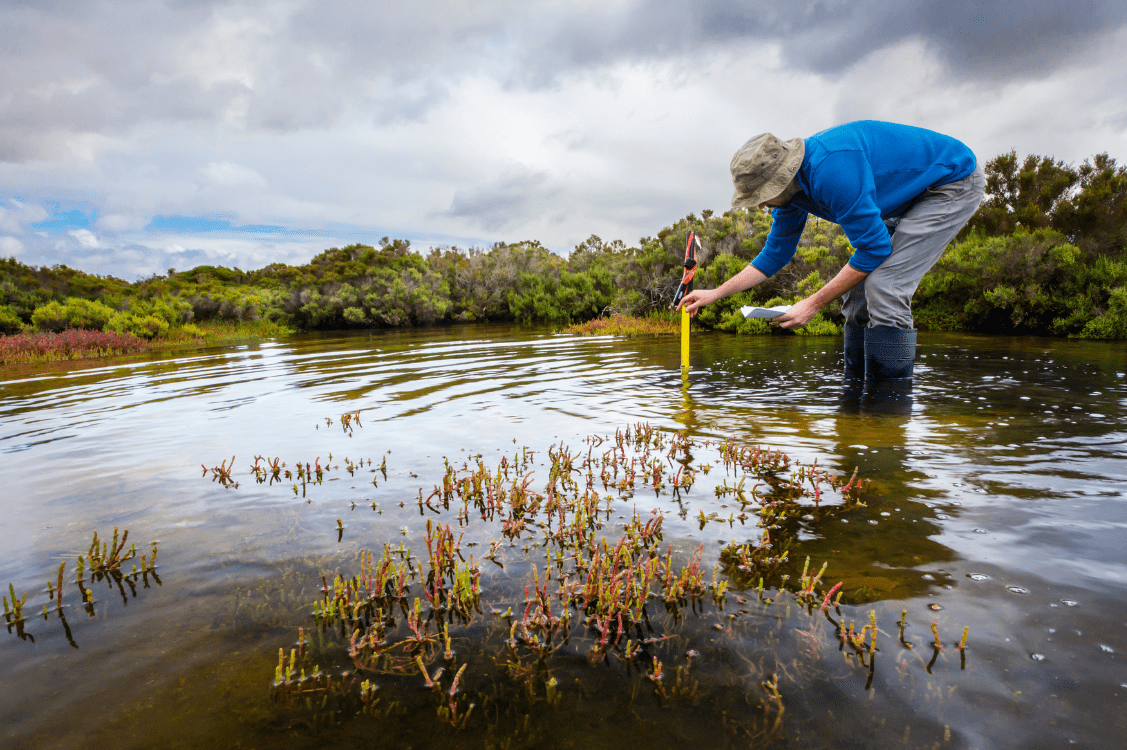How to incorporate climate risks into a critical infrastructure risk management program
An important step in addressing climate change is to incorporate associated risks in a risk management program for critical infrastructure. Here is how this can be done.
How to incorporate climate risks into a critical infrastructure risk management program
An important step in addressing climate change is to incorporate associated risks in a risk management program for critical infrastructure. Here is how this can be done.
Effect of climate change on critical infrastructure risks
The conditions caused by climate change can have a serious impact on critical infrastructure risks.

Extreme weather events
Rising temperatures can cause an increase in the severity and frequency of extreme weather events such as wildfires, storms, and floods. These events can cause damage to infrastructure, disrupt operations, and compromise safety.

Extreme weather events
Rising temperatures can cause an increase in the severity and frequency of extreme weather events such as wildfires, storms, and floods. These events can cause damage to infrastructure, disrupt operations, and compromise safety.
Rising sea levels
Coastal infrastructure, from ports to transportation networks, is put at risk from rising sea levels and coastal erosion. This is especially devastating to Australia as much of the country is concentrated in coastal areas.


Rising sea levels
Coastal infrastructure, from ports to transportation networks, is put at risk from rising sea levels and coastal erosion. This is especially devastating to Australia as much of the country is concentrated in coastal areas.

Extreme temperature changes
Extreme heat and extremely cold weather conditions are equally damaging, particularly to energy infrastructure and transportation networks. This can cause higher cooling/ heating demands, potentially causing power interruptions.

Extreme temperature changes
Extreme heat and extremely cold weather conditions are equally damaging, particularly to energy infrastructure and transportation networks. This can cause higher cooling/ heating demands, potentially causing power interruptions.
Water scarcity
Fluctuating weather can cause changes in precipitation patterns, resulting in water scarcity. This impacts agriculture, fisheries, tourism, and infrastructure systems like hydropower generators and water supply systems.


Water scarcity
Fluctuating weather can cause changes in precipitation patterns, resulting in water scarcity. This impacts agriculture, fisheries, tourism, and infrastructure systems like hydropower generators and water supply systems.

Ecosystem disruptions
Disruptions in ecosystems that critical infrastructure relies on can have severe consequences. This includes water quality, wildlife habitats, and ecosystem services like flood control that support critical infrastructure.

Ecosystem disruptions
Disruptions in ecosystems that critical infrastructure relies on can have severe consequences. This includes water quality, wildlife habitats, and ecosystem services like flood control that support critical infrastructure.
Adaptive strategies for a critical infrastructure risk management program
Temperatures in Australia have the potential to increase by as much as 1.8 °C by 2050 without the implementation of a low-carbon pathway.
Apart from enacting such sustainable initiatives, here is how mitigation strategies for climate risks can be incorporated into a critical infrastructure risk management program.
Resilient design and retrofitting
Utilising climate-resilient design principles in new infrastructure projects and retrofitting existing structures is a necessary step in enhancing their resilience to changing climate conditions.
Multi-hazard planning
As there is potential for a large array of climate-related hazards in Australia, considering these situations in risk assessments enables a more well-rounded understanding of risks and their consequences.
Resource diversification
Diversifying the resources utilised for infrastructure systems that depend on specific resources like water and energy prevents their operations from being disrupted by particular climate events.
Modular system implementation
Implementing module-based, flexible infrastructure systems makes the process of adapting and evolving over time to changing climate conditions easier as modular components can be upgraded as needed.
Nature-based solution application
Incorporating nature-based solutions such as green infrastructure, wetlands restoration, and sustainable drainage systems can help manage water-related risks effectively and enhance ecosystem services.
Collaboration and communication
Implementing risk management procedures that encourage collaboration and communication between stakeholders including government, private entities and local communities makes the process more comprehensive.
Stay on top of climate risks with critical infrastructure risk management solutions from SECTARA
SECTARA’s intuitive approach simplifies the process of risk management while maintaining the highest industry standards. SECTARA is aligned with international standards and best practices for security risk management including ISO 31000, Standards Australia’s Handbook 167, and NIST.
SECTARA’s critical infrastructure risk assessment capabilities offer the ability to identify various risk vectors, formulate effective defence strategies, and increase the risk resilience of critical infrastructure entities.
Furthermore, SECTARA also helps maintain compliance with related regulatory bodies, such as CISA, FERC, DOT, NPSA, Ofcom, and ACSC.
Experience what SECTARA has to offer with the 14-day free trial. Click the button below to sign up.
Some of the industries we serve
Government
Identify, monitor, and manage systemic risks associated with policy implementation, public safety, and national security with a scalable and configurable risk assessment solution.
Critical infrastructure
Obtain insights to identify and mitigate potential threats to critical infrastructure like energy, transportation, and communication systems through professional risk assessments.
Mining
Ensure safe, secure, and efficient operations and overcome common mining challenges like equipment failure and environmental hazards via a professional risk assessment solution.
Defence
Obtain a comprehensive view of potential threats to national and regional security and implement effective risk management strategies with military-grade risk assessment solutions.
Healthcare
Ensuring the safety of patients, staff, and other stakeholders while managing risks associated with medical procedures and data privacy through a configurable risk assessment solution.
Finance
Identify, monitor, and manage critical risks like market volatility and data breaches with a risk assessment solution to protect stakeholder assets and ensure regulatory compliance.
Consultancy
Help your clients make informed decisions about risk management by leveraging insights from a professional risk assessment solution that helps identify, address, and monitor risks.
Cybersecurity
Protect your digital assets with our advanced cybersecurity risk assessment solutions. Stay ahead of evolving threats and fortify your defences with comprehensive risk assessments.
Education
Identify and mitigate compliance, finance, operational, and reputational risks in processes such as student selection and regulatory adherence with professional risk assessments.
Experience the capabilities of SECTARATM first-hand. Sign up for our 14-day free trial today.
Start your 14-day free trial
What you get with our free trial
2 users (Account Admin, Org & BU Admin, Assessor, Viewer)
2 concurrent assessments
2 organisations & business units
In product training
The ability to export assessments to MS Word
MS Excel treatment plans
White label SECTARATM platform
White-label exported documents
Audit records
Experience the capabilities of SECTARATM first-hand. Sign up for our 14-day free trial today.
What you get with our free trial
2 users (Account Admin, Org & BU Admin, Assessor, Viewer)
2 concurrent assessments
2 organisations & business units
In product training
The ability to export assessments to MS Word
MS Excel treatment plans
White label SECTARATM platform
White-label exported documents
Audit records
Start your 14-day free trial



